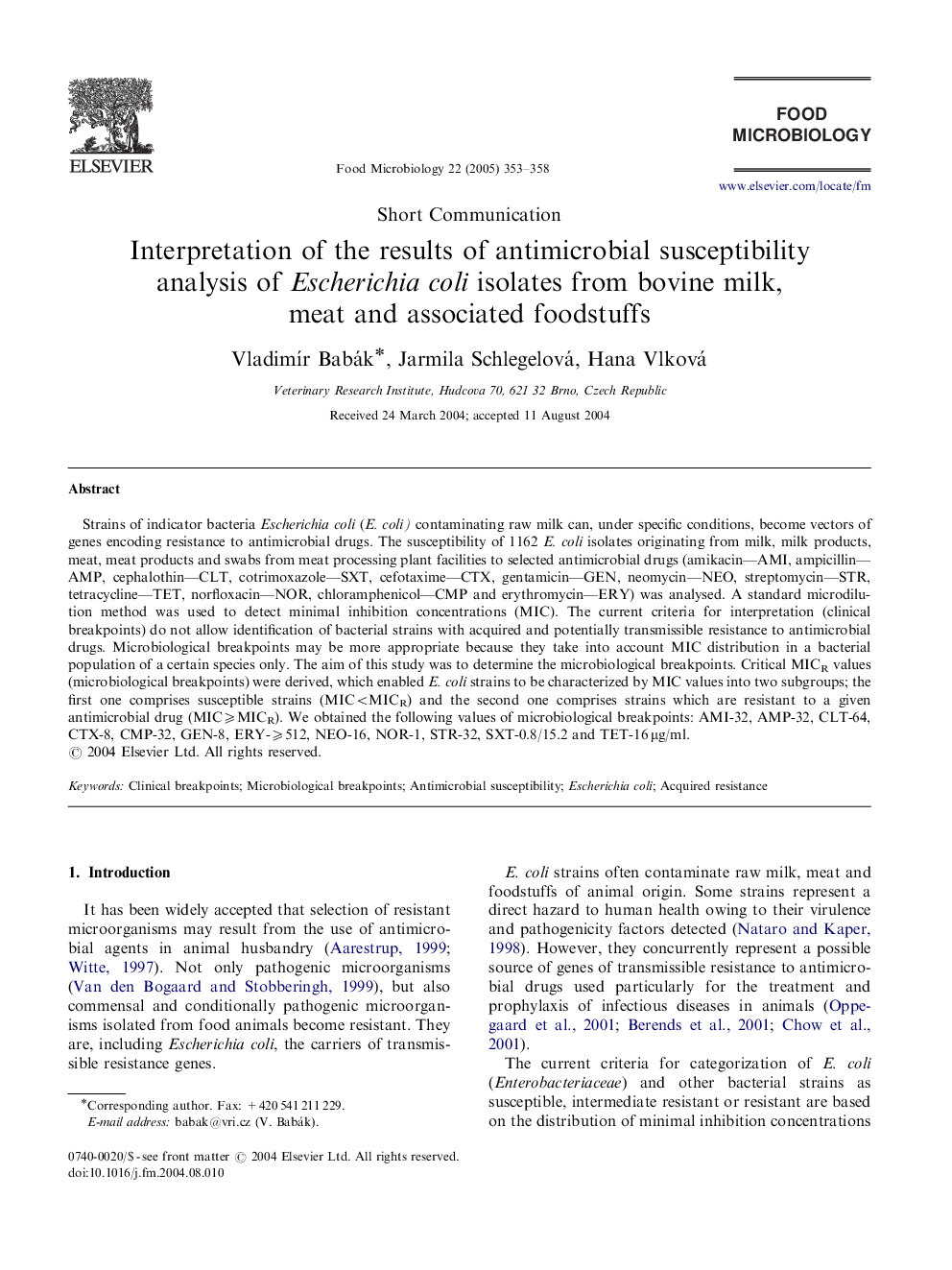| Article ID | Journal | Published Year | Pages | File Type |
|---|---|---|---|---|
| 9441932 | Food Microbiology | 2005 | 6 Pages |
Abstract
Strains of indicator bacteria Escherichia coli (E. coli) contaminating raw milk can, under specific conditions, become vectors of genes encoding resistance to antimicrobial drugs. The susceptibility of 1162 E. coli isolates originating from milk, milk products, meat, meat products and swabs from meat processing plant facilities to selected antimicrobial drugs (amikacin-AMI, ampicillin-AMP, cephalothin-CLT, cotrimoxazole-SXT, cefotaxime-CTX, gentamicin-GEN, neomycin-NEO, streptomycin-STR, tetracycline-TET, norfloxacin-NOR, chloramphenicol-CMP and erythromycin-ERY) was analysed. A standard microdilution method was used to detect minimal inhibition concentrations (MIC). The current criteria for interpretation (clinical breakpoints) do not allow identification of bacterial strains with acquired and potentially transmissible resistance to antimicrobial drugs. Microbiological breakpoints may be more appropriate because they take into account MIC distribution in a bacterial population of a certain species only. The aim of this study was to determine the microbiological breakpoints. Critical MICR values (microbiological breakpoints) were derived, which enabled E. coli strains to be characterized by MIC values into two subgroups; the first one comprises susceptible strains (MIC
Related Topics
Life Sciences
Agricultural and Biological Sciences
Food Science
Authors
VladimÃr Babák, Jarmila Schlegelová, Hana Vlková,
